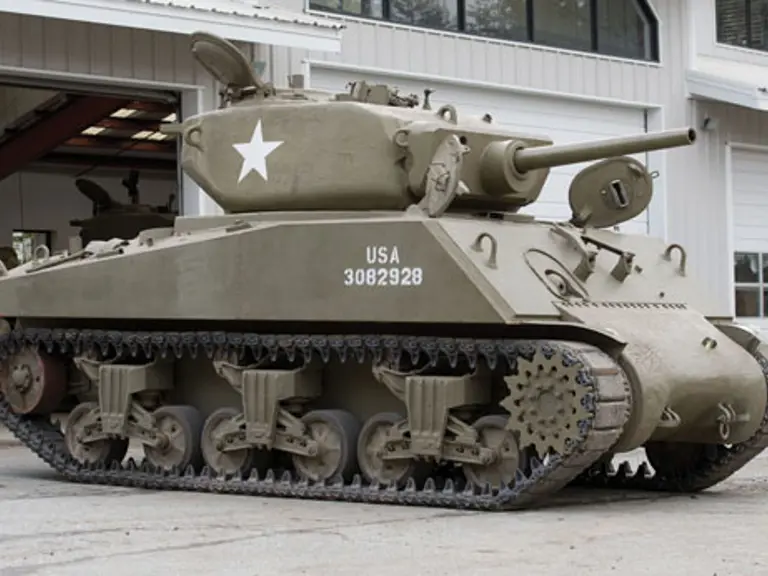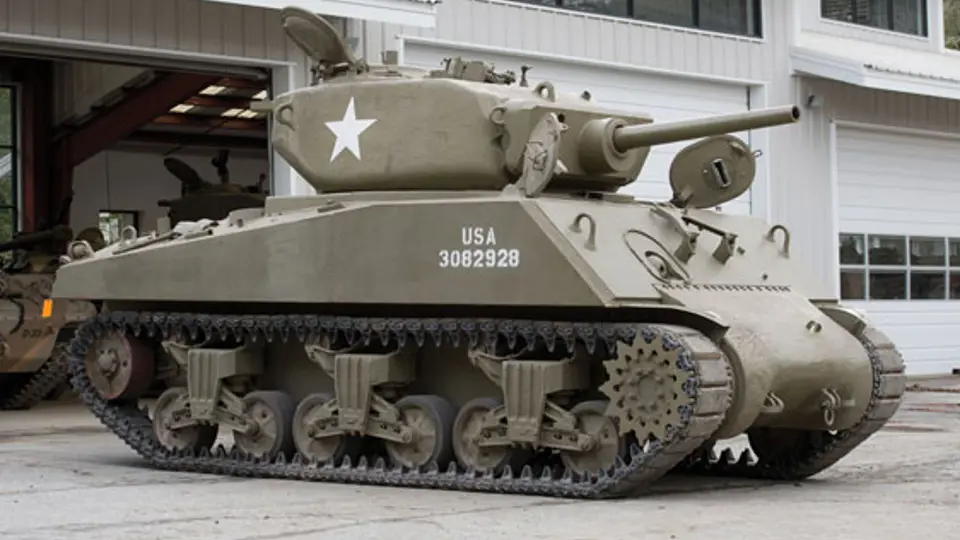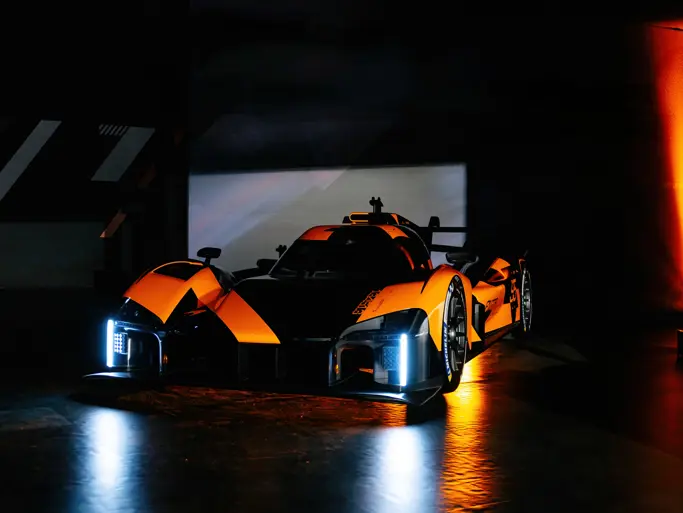 | Portola Valley, California
| Portola Valley, California
Weight: 42-tons (38,101-kg)
Length: 20' 7” (6.27-m)
Width: 9' 7” (2.92-m)
Height: 9' 8” (2.94-m)
Crew: 5
Armor:
Hull front: 4” (102-mm)
Turret front: 6” (153-mm)
Weapons:
Primary: 1x 75-mm M3 gun
Secondary: 1x .50-caliber M2HB machine gun
2x .30-cal M1919A4 machine guns
Ammunition:
104x 75-mm
600x .50-cal
6,250x .30-cal
Engine: 8-cylinder Ford GAA, 450-hp
Power/weight: 10.7-hp/ton
Fuel Capacity: 168-USG (635-l)
Range: 100-miles (146-km)
Speed: 22-mph (32-km/h)
The tank being offered, Assault Tank M4A3E2 “Sherman Jumbo”, serial number 50331, registration number 3082929, is an extremely rare vehicle with possibly only 7 or 8 left in existence. It is an incomplete restoration that is nearly finished. The exterior is in excellent shape with good paint. Some minor punch list items need to be added such as the gunner's sight housing and turret spotlight. Both taillights are present. No headlights are included as the M4A3E2 was not fitted with them. The suspension has been fully restored and is fully functional. It is equipped with T51 rubber block tracks. The roadwheels are C85163 “Stamped Spoke” type while the idler wheels are the matching C85164 “Stamped Spoke” type. The drive sprockets are a variation of the D47366 type. Spare track block holders are fitted to the hull rear plate. All hatches open and close normally. All driver's controls operate normally. Restoration of the interior is incomplete with the wet stowage ammunition bins and other sheetmetal items needing to be installed. These parts are included with the vehicle for the buyer to install. The engine runs on four cylinders; a bad magneto or magneto drive is suspect.
In early 1944, plans for the invasion of Europe were well underway. In February of that year, the Army Ground Forces requested that the existing light and medium tanks designs be modified in order to create an assault tank to be used for infantry support against the expected German fortifications. The M4A3 was the type chosen to be modified. The modifications were authorized in March 1944 and the vehicle was designated Assault Tank M4A3E2.
The standard M4A3 was modified by welding an additional 1.5-inches (38-mm) of armor over the hull front and on the hull sides. This increased the protection to 4-inches (102-mm) and 3-inches (76-mm) respectively. A new cast differential and final drive housing was produced that had a maximum armor thickness of 5.5-inches (140-mm). In addition to the hull modifications, a new turret casting was used. It was based on the turret of the 76-mm gun armed T23 and had 6-inches (153-mm) armor all around. The 75-mm M3 gun was mounted in the T110 combination gun mount that had a gun shield 7-inches (179-mm) thick. Due to the increased weight, the final drive ratio was increased from 2.84:1 to 3.36:1. To cope with the increased ground pressure, extended end connectors or “duckbills” were mounted on the tracks. Fisher Tank Arsenal began production of the M4A3E2 in May 1944 with 254 being built by the time production ended in July the same year.
The M4A3E2 began to reach the troops in Europe in the Fall of 1944. Their thick armor made them immediately popular with U.S. tankers. Many were used as the “point” tank as they were able to absorb hits that would've knocked out normal M4's. During the German Ardennes offensive of December 1944, commonly referred to as “The Battle of the Bulge,” a M4A3E2 belonging to the U.S. 4th Armored Division was the first U.S. tank to breakthrough to the embattled 101st Airborne Division who were surrounded and holding the perimeter around the important town of Bastogne. This particular M4A3E2, nicknamed “Cobra King” survived the war and is currently at Ft. Benning, Georgia. Beginning in early 1945, many M4A3E2's were upgunned with the 76-mm M1A1/A1C gun in order to provide it with better anti-tank capability. The M4A3E2 remained in service through the end of World War II with several surviving vehicles equipping U.S. Army National Guard units until the early 1950s. Because of the small number of M4A3E2's produced, it is safe to surmise that all of the surviving vehicles are veterans of the European Theater of Operations during World War II.
Transport Cost to Storage: $5,016





